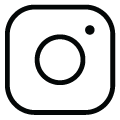The Body Psychologist : Boniface Verney-Carron on Trauma
For Boniface Verney-Carron, trauma is not merely a psychological scar - it is a lived, cellular experience. As a French osteopath, somatic practitioner and co-founder of the healing practice Maison Verney-Carron, he approaches trauma as something deeply embedded in the body, often beyond words, beyond conscious memory. His work draws from craniosacral therapy, osteopathy, Traditional Chinese Medicine, and Jungian psychoanalysis, all layered into a holistic philosophy that honours the body's innate intelligence.

I don’t see trauma as something that happens to you and ends. It doesn’t vanish when the moment passes. Trauma embeds itself in breath, in bone, in the quiet geometry of the fascia. The body remembers in ways the mind cannot. I’ve seen this over and over again. A client comes in with a sore back or unexplained exhaustion, and what we find together has nothing to do with their spine, and everything to do with a moment they never got to finish: an impact, a loss, a frozen breath, something unsaid that stayed lodged in the diaphragm or behind the heart.
When the nervous system is overwhelmed – truly overwhelmed – it doesn’t process in real time. It braces. It splinters. The breath shortens, the jaw locks, the tissues harden, not out of weakness but in protection. This is not dysfunction. This is survival. The body adapts around the wound. It reorganises the architecture to keep going. But over time, those protective patterns become prisons. They limit movement, dim vitality, disconnect us from our own centre. You may not feel the trauma as an emotion, but you might feel it as a heaviness in the chest when you wake, or the way your shoulders lift a little higher than necessary when you speak.
I don’t approach this work like a mechanic. I’m not here to fix anyone. I listen. My hands are trained not just to adjust, but to hear through the tissue, the cranial rhythm, the micro-movements that speak when words fall short. The story of trauma often comes out sideways: a flicker in the sacrum, a twitch in the foot, a tear without an obvious source. These are all welcome. Nothing is forced. The body will only let go when it feels safe. And safety, for me, is the first and only medicine that matters.
“The body remembers in ways the mind cannot.”
“The body remembers in ways the mind cannot.”
Sometimes healing begins not with movement, but with stillness, the moment the system senses it’s not under threat anymore. It’s remarkable what happens when the nervous system feels held. The breath deepens. The belly softens. There’s a shift, almost like an internal tide, and the body starts to remember itself – not the story, but the rhythm beneath the story.
People often think healing looks dramatic. But it can be very, very subtle. A single exhale. A quiet yawn. A warmth that returns to the hands. These are signs that the system is recalibrating. The architecture is realigning. The self that got pushed out, banished during the moment of overwhelm, is finding its way home.
I see the body as a sacred structure, not separate from the soul. The bones speak, the tissues speak, and within that conversation lies the intelligence of life trying to reorganize itself. My role is simply to accompany, to co-regulate, to be present without agenda. The rest belongs to the body. It knows the way, if we give it the space to speak.

What I’ve come to trust, again and again, is that trauma isn’t pathology. It’s the story of how the system tried to preserve life. It’s the brilliance of a body that chose to survive in the only way it could. When we meet those parts with reverence rather than resistance, something opens. And in that opening, healing becomes not an act of correction, but a return – a return to rhythm, to sensation, to self.
I don’t rush it. There’s no need. The body will release when it no longer needs to protect. That moment, when it comes, is quiet, sacred, and real. I am simply a witness.
I don’t see trauma as something that happens to you and ends. It doesn’t vanish when the moment passes. Trauma embeds itself in breath, in bone, in the quiet geometry of the fascia. The body remembers in ways the mind cannot. I’ve seen this over and over again. A client comes in with a sore back or unexplained exhaustion, and what we find together has nothing to do with their spine, and everything to do with a moment they never got to finish: an impact, a loss, a frozen breath, something unsaid that stayed lodged in the diaphragm or behind the heart.
When the nervous system is overwhelmed – truly overwhelmed – it doesn’t process in real time. It braces. It splinters. The breath shortens, the jaw locks, the tissues harden, not out of weakness but in protection. This is not dysfunction. This is survival. The body adapts around the wound. It reorganises the architecture to keep going. But over time, those protective patterns become prisons. They limit movement, dim vitality, disconnect us from our own centre. You may not feel the trauma as an emotion, but you might feel it as a heaviness in the chest when you wake, or the way your shoulders lift a little higher than necessary when you speak.
I don’t approach this work like a mechanic. I’m not here to fix anyone. I listen. My hands are trained not just to adjust, but to hear through the tissue, the cranial rhythm, the micro-movements that speak when words fall short. The story of trauma often comes out sideways: a flicker in the sacrum, a twitch in the foot, a tear without an obvious source. These are all welcome. Nothing is forced. The body will only let go when it feels safe. And safety, for me, is the first and only medicine that matters.
“The body remembers in ways the mind cannot.”
“The body remembers in ways the mind cannot.”
Sometimes healing begins not with movement, but with stillness, the moment the system senses it’s not under threat anymore. It’s remarkable what happens when the nervous system feels held. The breath deepens. The belly softens. There’s a shift, almost like an internal tide, and the body starts to remember itself – not the story, but the rhythm beneath the story.
People often think healing looks dramatic. But it can be very, very subtle. A single exhale. A quiet yawn. A warmth that returns to the hands. These are signs that the system is recalibrating. The architecture is realigning. The self that got pushed out, banished during the moment of overwhelm, is finding its way home.
I see the body as a sacred structure, not separate from the soul. The bones speak, the tissues speak, and within that conversation lies the intelligence of life trying to reorganize itself. My role is simply to accompany, to co-regulate, to be present without agenda. The rest belongs to the body. It knows the way, if we give it the space to speak.

What I’ve come to trust, again and again, is that trauma isn’t pathology. It’s the story of how the system tried to preserve life. It’s the brilliance of a body that chose to survive in the only way it could. When we meet those parts with reverence rather than resistance, something opens. And in that opening, healing becomes not an act of correction, but a return – a return to rhythm, to sensation, to self.
I don’t rush it. There’s no need. The body will release when it no longer needs to protect. That moment, when it comes, is quiet, sacred, and real. I am simply a witness.
DON’T MISS






